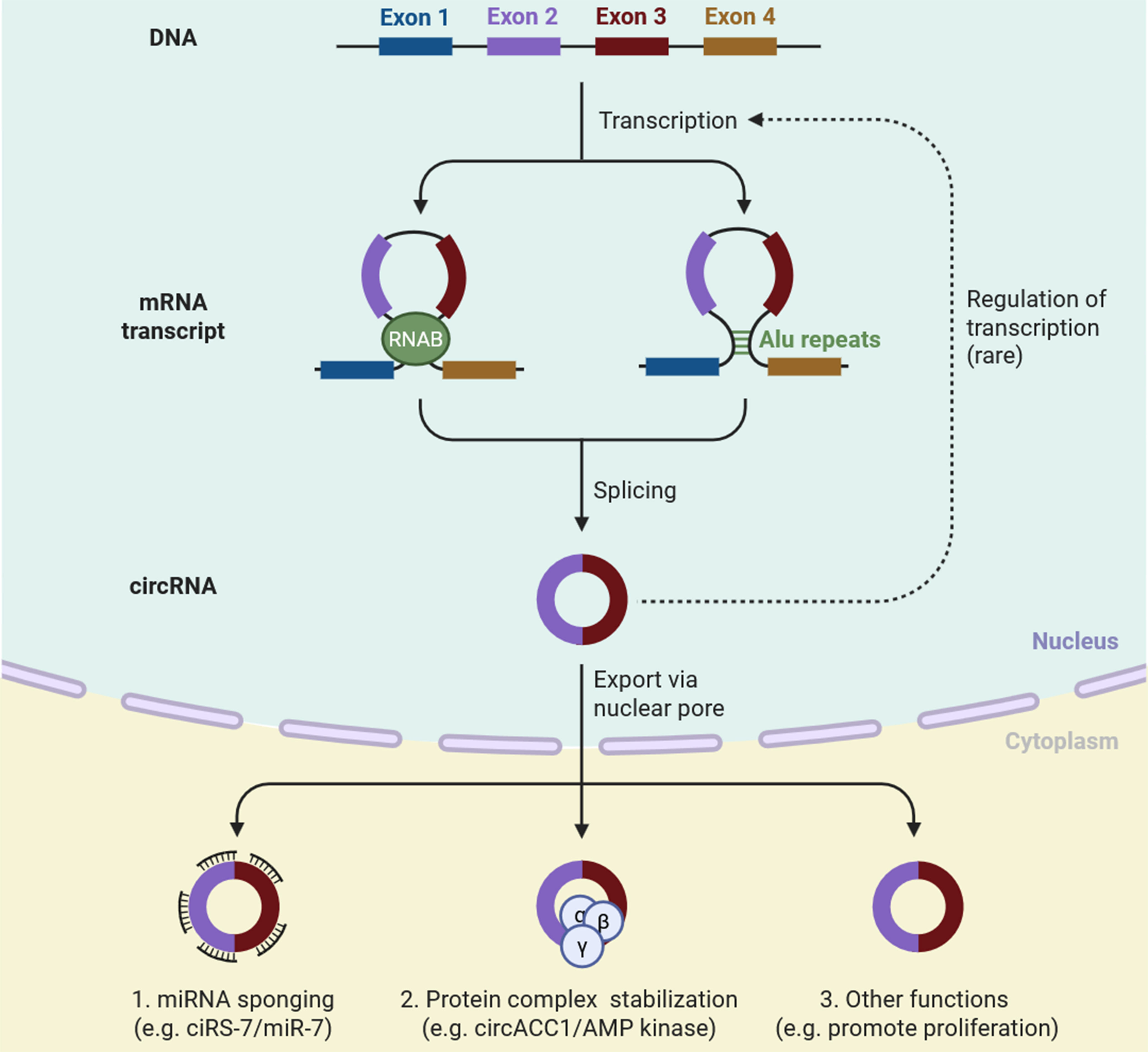fig1
Figure 1. This schematic illustrates the formation of circRNAs through back-splicing of pre-mRNA, where exons are circularized via RBP or Alu repeat elements. The resulting circRNA is exported from the nucleus into the cytoplasm. CircRNAs can perform multiple regulatory functions, including (1) miRNA sponging (e.g., ciRS-7 sequestering miR-7); (2) stabilization of protein complexes (e.g., circACC1 supporting AMP kinase activity); and (3) other cellular roles, such as promoting proliferation and modulating gene expression. Though rare, circRNAs may also influence transcriptional regulation in the nucleus. These diverse functions contribute to circRNAs’ roles in cancer progression and drug resistance [Created in BioRender. Singh DD (2025)]. circRNAs: Circular RNAs; RBP: RNA-binding proteins; miRNA: microRNA; AMP: adenosine monophosphate.












